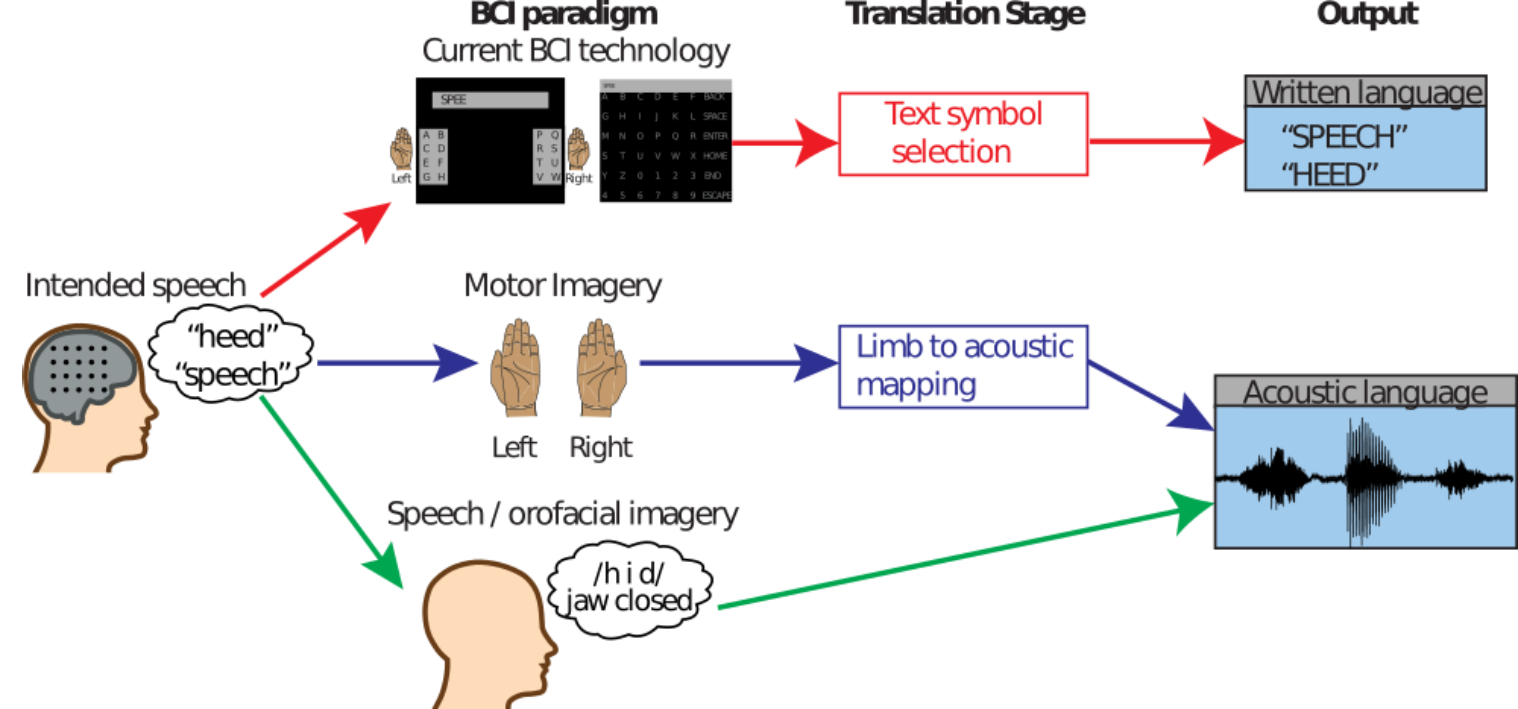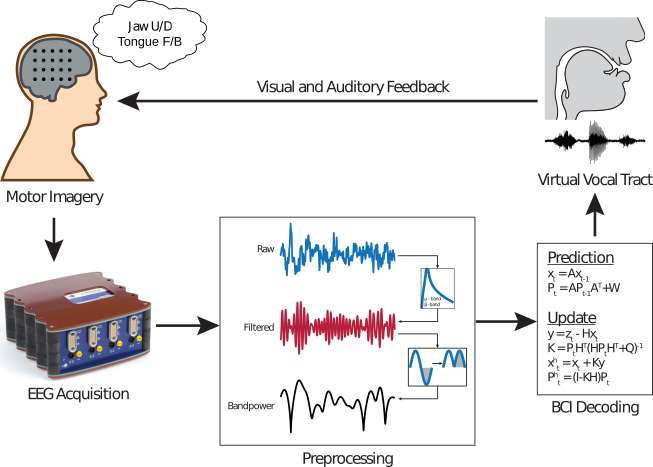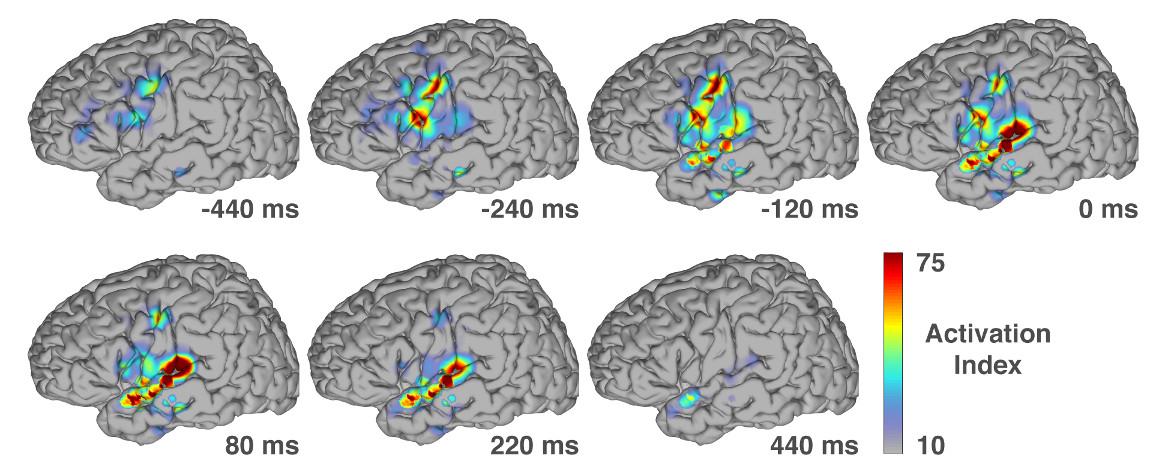Speech and Applied Neuroscience Lab

The Speech and Applied Neuroscience Lab at the University of Kansas focuses on better understanding the patterns of neural activity leading to fluent speech production and perception, and how to use that information to create advanced assistive communication devices for individuals with profound motor impairments. Our research combines expertise from a wide range of disciplines including Speech, Language Hearing Sciences, Neuroscience, Electrical Engineering, Computer Science, Psychology and Linguistics.
Our research is supported by the National Institute on Deafness and other Communication Disorders (NIDCD R03-DC011304, J. Brumberg PI, R21-DC013095, R. Patel PI), CELEST, a National Science Foundation Science of Learning Center (NSF SMA-0835976, B. Shinn-Cunningham PI) and the American Speech-Language-Hearing Foundation (NCSRG, J. Brumberg PI).

BCI's can be used to restore / replace communication for individuals who are paralyzed. Each technique requires a different type of neural control and interface with communication software ranging from selecting letters, numbers, and phrases to directly producing vocalized speech sounds using an artificial vocal tract. Approaches in our lab focus on motor control either with a translation stage (e.g., limb imagery used for selecting items on a keyboard) or without a translation stage (e.g., direct decoding of brain activity related to speech motor control into articulatory or acoustic outcomes).

Direct BCIs for controlling software simulations of the human vocal tract have the potential to restore fluent, continuous speech for individuals who are unable to speak due to paralysis and other speech and neuromotor disorders.

Brain activity related to speech production shifts emphasis from planning and execution (frontal & motor regions) to sensory feedback monitoring (temporal regions) in this example from electrocorticography. Here, leading intervals represent brain activity related to speech preparation, lagging intervals relate to feedback perception of one's own speech, and time zero is the moment of speech production.